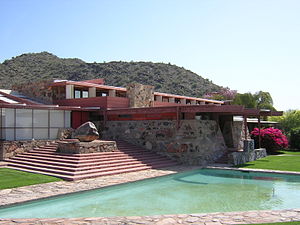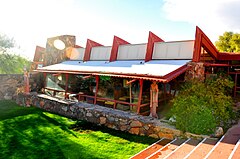
Frank Lloyd Wright Sr. was an American architect, designer, writer, and educator. He designed more than 1,000 structures over a creative period of 70 years. Wright played a key role in the architectural movements of the twentieth century, influencing architects worldwide through his works and mentoring hundreds of apprentices in his Taliesin Fellowship. Wright believed in designing in harmony with humanity and the environment, a philosophy he called organic architecture. This philosophy was exemplified in Fallingwater (1935), which has been called "the best all-time work of American architecture".
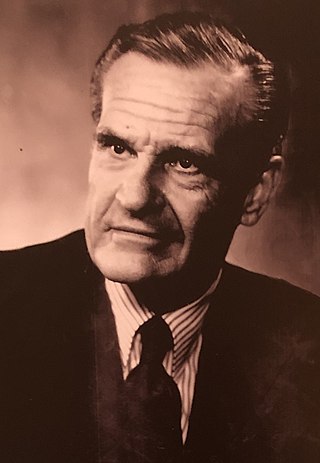
William Wesley Peters was an American architect and engineer, apprentice to and protégé of his father-in-law Frank Lloyd Wright.

Fallingwater is a house designed by the architect Frank Lloyd Wright in 1935. Situated in the Mill Run section of Stewart township, in the Laurel Highlands of southwest Pennsylvania, about 70 miles (110 km) southeast of Pittsburgh in the United States, it is built partly over a waterfall on the Bear Run river. The house was designed to serve as a weekend retreat for Liliane and Edgar J. Kaufmann, the owner of Pittsburgh's Kaufmann's Department Store.

The Frederick C. Robie House is a U.S. National Historic Landmark now on the campus of the University of Chicago in the South Side community area of Hyde Park in Chicago, Illinois. Built between 1909 and 1910, the building was designed as a single family home by architect Frank Lloyd Wright. It is considered perhaps the finest example of Prairie School, the first architectural style considered uniquely American.

Taliesin, sometimes known as Taliesin East, Taliesin Spring Green, or Taliesin North after 1937, is a historic property located 2.5 miles (4.0 km) south of the village of Spring Green, Wisconsin, United States. It was the estate of American architect Frank Lloyd Wright and an extended exemplar of the Prairie School of architecture. The expansive house-studio set on the brow of a ridge was begun in 1911; the 600-acre (240 ha) property was developed on land that previously belonged to Wright's maternal family.

Samara, also known as the John E. Christian House, is a house designed by Frank Lloyd Wright located in West Lafayette, Indiana. The home is an example of the Usonian homes that Wright designed. Samara was built from 1954 to 1956 and was still occupied by the original owner, John E. Christian, until he died on July 12, 2015.
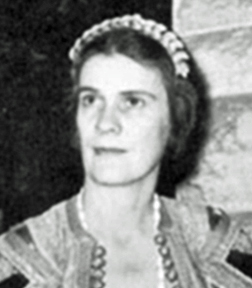
Olgivanna Lloyd Wright was the third and final wife of architect Frank Lloyd Wright. They first met in November 1924 and married in 1928. In 1932, the couple established Wright's architectural apprentice program and Taliesin Fellowship. In 1940, Olgivanna and Frank, along with their son-in-law William Wesley Peters, co-founded the Frank Lloyd Wright Foundation. Following her husband's death in 1959, Olgivanna assumed the role of President of the Frank Lloyd Wright Foundation, a position she held until a month prior to her death in 1985.

Taliesin Associated Architects was an architectural firm founded by apprentices of Frank Lloyd Wright to carry on his architectural vision after his death in 1959. The firm disbanded in 2003.

Tan-y-Deri, is also known as the Andrew T. Porter Home and the Jane and Andrew Porter Home. Jane Porter (1869–1953) was the sister of architect Frank Lloyd Wright. The home was commissioned from Wright in 1907, with Jane and Andrew Porter (1858–1948) moving in with their children James (1901–1912) and Anna (1905–1934) by late January 1908. The home stands in a valley in the town of Wyoming, Wisconsin. This valley was originally settled by the Lloyd Joneses, who were the family of Wright and his sister's mother. The Lloyd Joneses were originally from Wales and, as a result of this heritage, Wright chose a Welsh name for the Porter home: “Tan-y-deri” is Welsh for “Under the oaks”.

The David and Gladys Wright House is a Frank Lloyd Wright residence built in 1952 in the Arcadia neighborhood of Phoenix, Arizona. It has historically been listed with an address of 5212 East Exeter Boulevard, but currently has an entrance on the 4500 block of North Rubicon Avenue. There currently is no public access to the house.

Ling Po was an artist and apprentice to Frank Lloyd Wright. Chow's English name "Ling Po" was coined by Wright by combining Chow's ancestral home Ningbo and the famous Chinese poet Li Bai.

The Riverview Terrace Restaurant, also known as The Spring Green Restaurant, is a building designed by architect Frank Lloyd Wright in 1953 near his Taliesin estate in Wisconsin. He purchased the land on which to build the restaurant as, "a wayside for tourists with a balcony over the river." Construction began the next year, with the roof being added by 1957. The building was incomplete when he died in 1959, but was purchased in 1966 by the Wisconsin River Development Corporation and completed the next year as The Spring Green restaurant. The building was listed on the National Register of Historic Places in 2024.
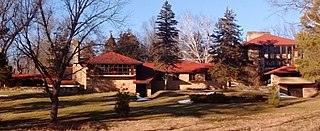
The Hillside Home School II was originally designed by architect Frank Lloyd Wright in 1901 for his aunts Jane and Ellen C. Lloyd Jones in the town of Wyoming, Wisconsin. The Lloyd Jones sisters commissioned the building to provide classrooms for their school, also known as the Hillside Home School. The Hillside Home School structure is on the Taliesin estate, which was declared a National Historic Landmark in 1976. There are four other Wright-designed buildings on the estate : the Romeo and Juliet Windmill tower, Tan-y-Deri, Midway Barn, and Wright's home, Taliesin.
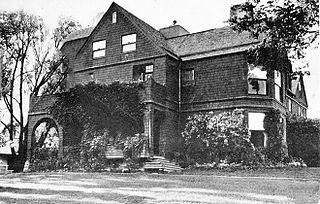
Hillside Home School I, also known as the Hillside Home Building, was a Shingle Style building that architect Frank Lloyd Wright designed in 1887 for his aunts, Ellen and Jane Lloyd Jones for their Hillside Home School in the town of Wyoming, Wisconsin. The building functioned as a dormitory and library. Wright had the building demolished in 1950.
Lois Davidson Gottlieb was an American architect best known for residential designs. She was born in San Francisco, California. Gottlieb's professional career spans more than 50 years. She practiced architecture in and outside the U.S. as a prolific residential designer. Most of her domestic designs can be found in California, Washington, Idaho and Virginia. Gottlieb's works have been featured in various publications, exhibits, and the documentary video made about her work on 'The Gottlieb House' in Fairfax Station, Virginia. Lois Davidson was an apprentice to Frank Lloyd Wright as a part of the Taliesin Fellowship in Scottsdale, Arizona, and Wright's winter home and the western counterpart to Taliesin East in Spring Green, Wisconsin, 1948–1949. Gottlieb co-founded an architectural firm, Duncombe-Davidson, with A. Jane Duncombe, who is also one of the apprentices to Wright's Taliesin at that time. Gottlieb is also a former member of International Archive of Women in Architecture's board of directors. She died on August 12, 2018, at age 91.
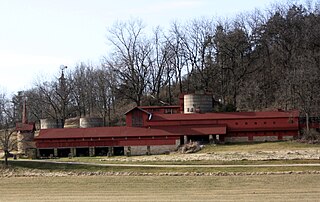
Midway Barn was designed by architect Frank Lloyd Wright for farming on his Taliesin estate in the town of Wyoming, Wisconsin. The building was designated a National Historic Landmark in 1976.

The School of Architecture is a private architecture school in Paradise Valley, Arizona. It was founded in 1986 as an accredited school by surviving members of the Taliesin Fellowship. The school offers a Master of Architecture program focusing on the organic architecture design philosophy of Frank Lloyd Wright. The school is the smallest accredited graduate architecture program in the United States and emphasizes hands-on learning, architectural immersion, experimentation, and a design-build program that grew out of the Taliesin Fellowships’ tradition of building shelters in the Arizona desert. The school is not ranked by any ranking publications.
The 20th-Century Architecture of Frank Lloyd Wright is a UNESCO World Heritage Site consisting of a selection of eight buildings across the United States that were designed by American architect Frank Lloyd Wright. These sites demonstrate his philosophy of organic architecture, designing structures that were in harmony with humanity and its environment. Wright's work had an international influence on the development of architecture in the 20th century.

Ocotillo was a temporary camp in Chandler, Arizona designed by American architect Frank Lloyd Wright and constructed in late-January/early-February 1929 by his draftsmen. The camp buildings, made out of wood and canvas, were intended by the architect to provide living and working spaces for himself and his draftsmen while they worked on a project for promoter, hotelier and entrepreneur, Dr. Alexander John Chandler. Chandler allowed Wright to use part of his land on which to construct the camp.
